The Easy and Affordable Way to Clean Your Polishing Pads
Keeping your polishing pads clean is extremely important to the performance and life of your polishing pads. I have used all of the machines, gadgets, and tools to clean pads, and while some of them really do a great job, they are not always practicable. I have always used dedicated pad cleaners, but a friend suggested to me that they where just degreasers. I looked around the garage, saw a spray bottle of Meguiar's Super Degreaser, and gave it a go. The results were instananeous. Over time this became my preferred method of pad cleaning and I enthusiasticly recommended this process to everybody who would listen.
Degreaser vs. Soap
A lot of detailers use liquid soaps, most commonly dish washing soaps, to clean their pads. Most of the stronger soaps do a great job, but can be frustrating to fully rinse out of the pad. It seems several hours of rinsing later you can still squeeze foam soap bubbles out. Meguiar's Super Degreaser rinses clean very quickly, as it is designed to release from surface quickly. Most dish soaps will leave behind a film to promote water sheeting off over plates and silverware, to resist water spotting. This film can be very difficult to fully remove, particularly once trapped inside the foam cells of a pad.
Two Bucket Method
While it is not necessary to have two buckets for pad washing, it certaintely helps. The wash bucket it were all the dirty cleaning happens, and this water will be contaminated with solution and polish residue. The rinse bucket is used after the pad has been cleaned to flush out any remaining solution from the first bucket and to ensure the pad is perfectly clean.
Getting Started
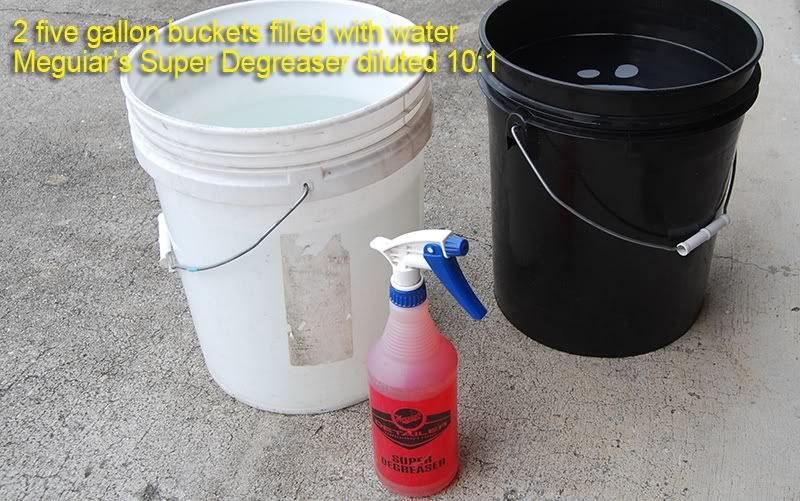
The surface of this Meguiar's Softbuff 2.0 Cutting pad has a lot of embedded abrasives and is in desperate need of cleaning.
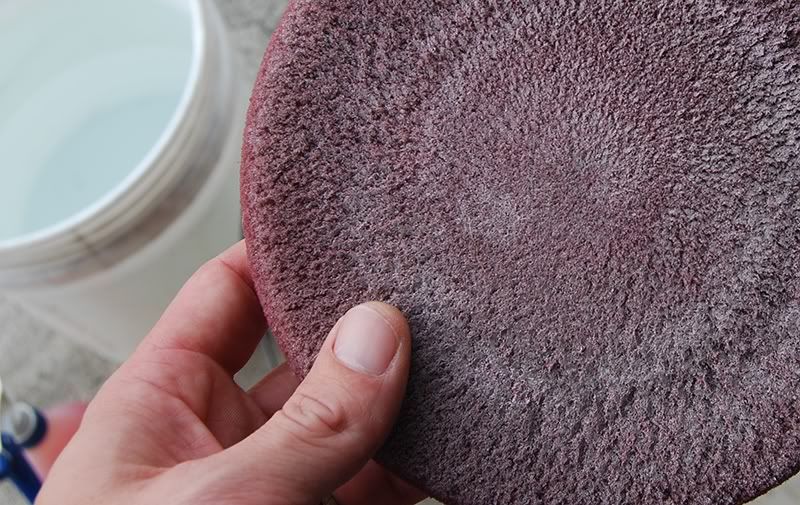
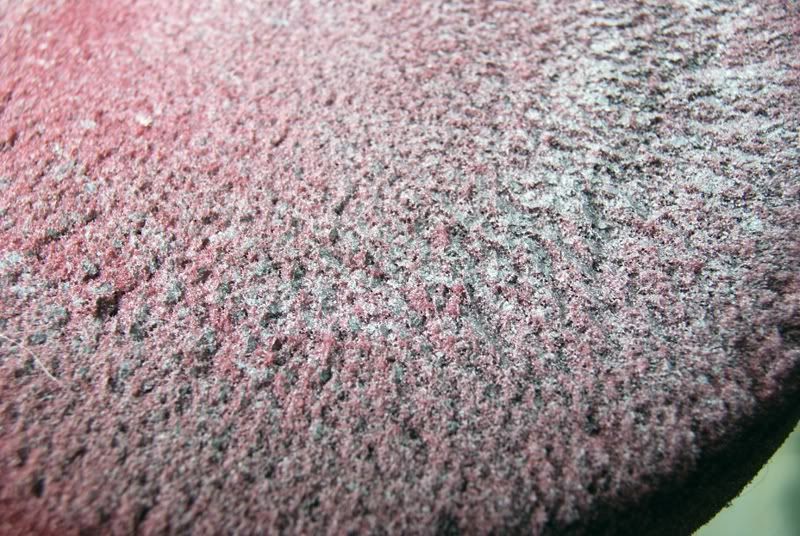
Spray the surface of the pad liberally with degreaser solution and massage the cleaner into the pad.
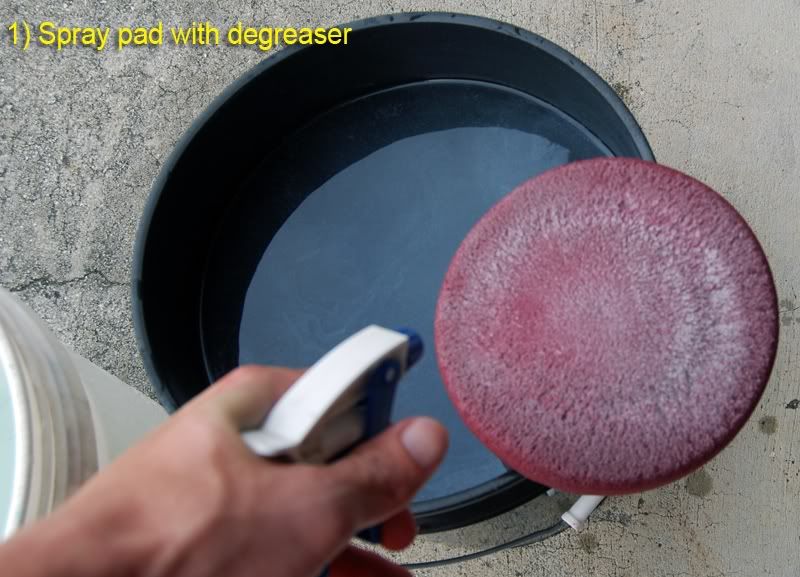
Dunk into the wash bucket. Massage and scrunch the pad in the water. Polish residue will release immediately.
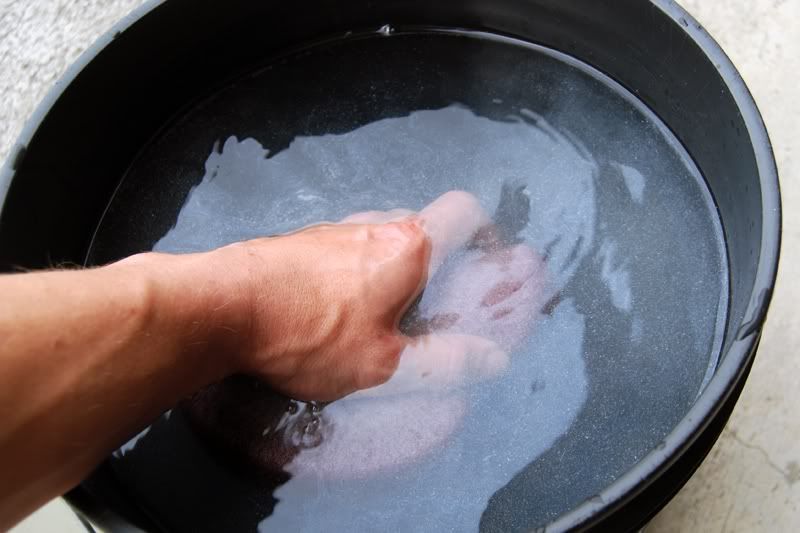
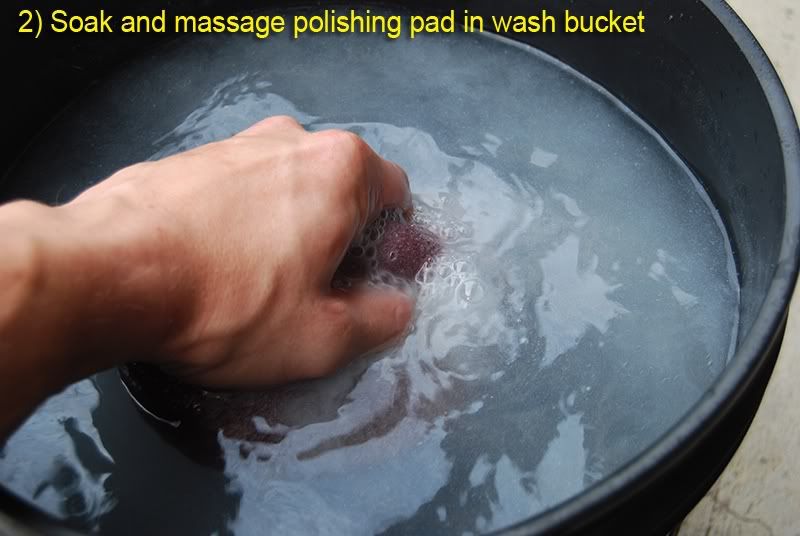
Finally wring and inspect. There is some stubborn residue on the bottom right corner of this pad.
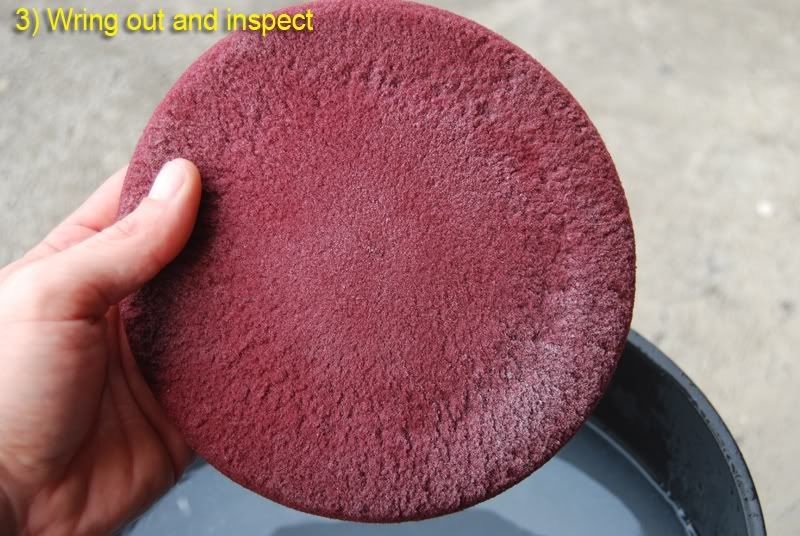
If needed, spray more degreaser on the pad and brush any stubborn areas with a stiff nylon brush, such as a pad brush.
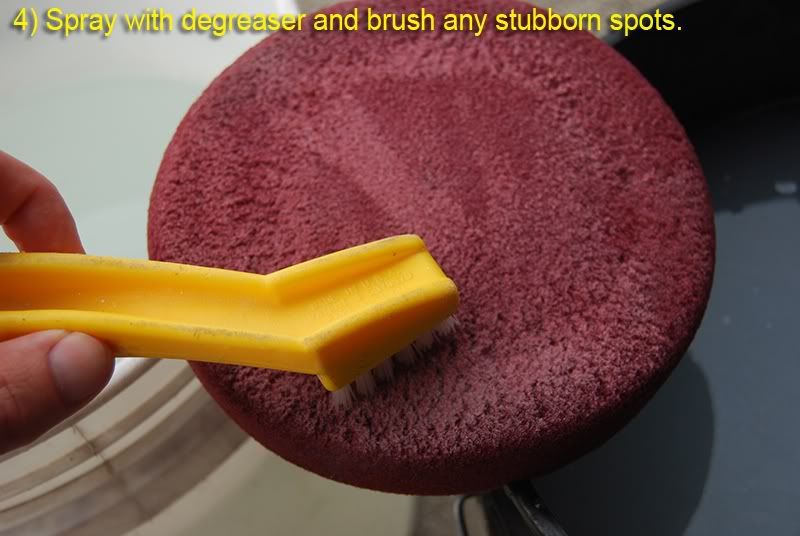
Dunk and flush out as much solution in the wash bucket. Finally wring out as much solution over the wash bucket.
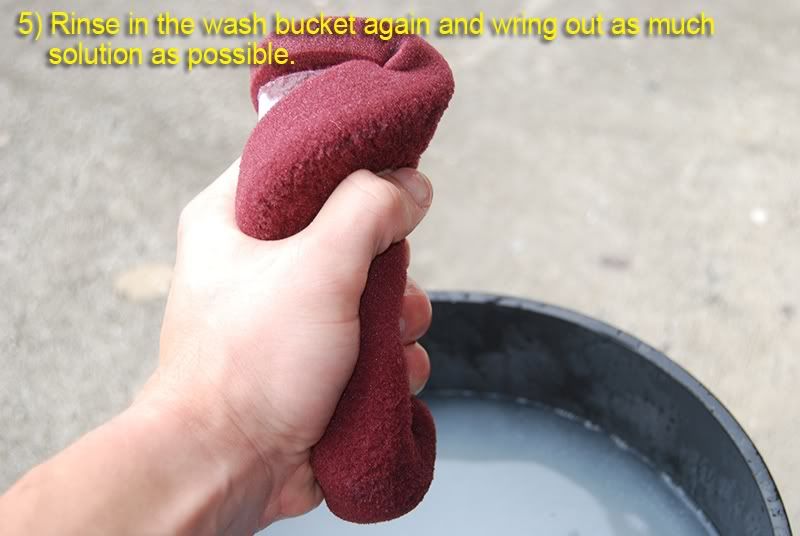
At this point the pad should appear clean, and well rang out. Finally massage and wring out any solution in the second bucket; the rinse bucket. This will ensure that all of the contaminated water from the wash bucket is removed and the pad is completely clean.
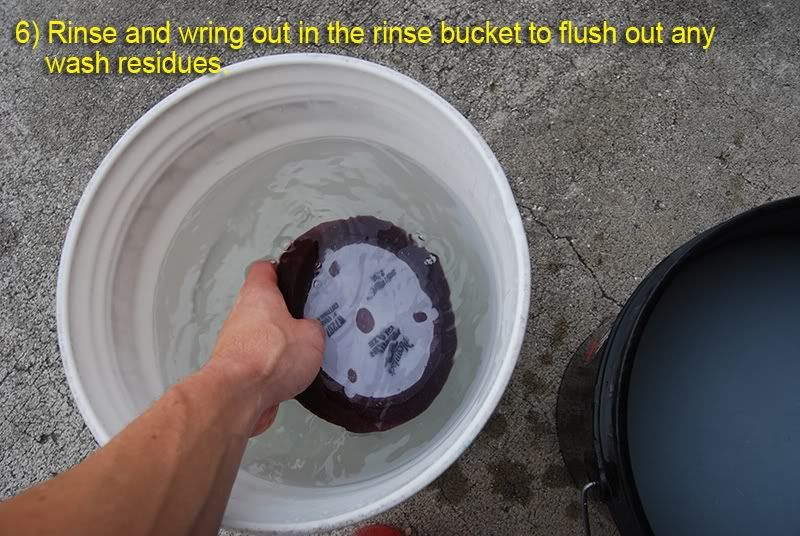
Finally spin the pad dry on a machine, if available, and allow to air dry completely before use.
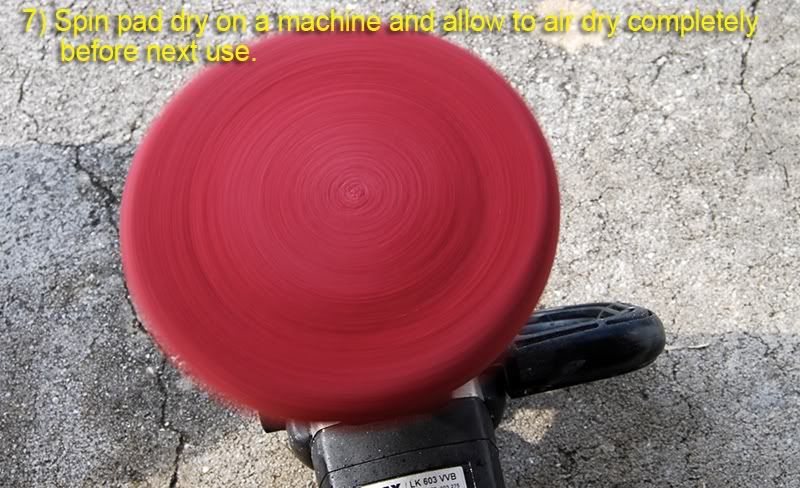
The end result is a pad that is completely clean and should be free of any residues which could hamper further use. This method will clean the entire pad, instead of just the surface.
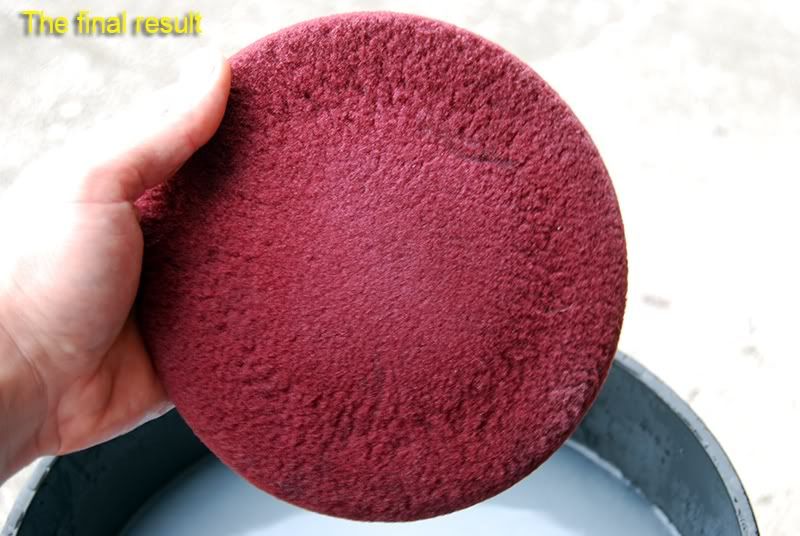
A Method for All Pads
This method, because of the submergence of the pad, is suited to all pad types including wool and multi-fingered pads that have large surface areas. These pads tend to require scrubbing for the best results.
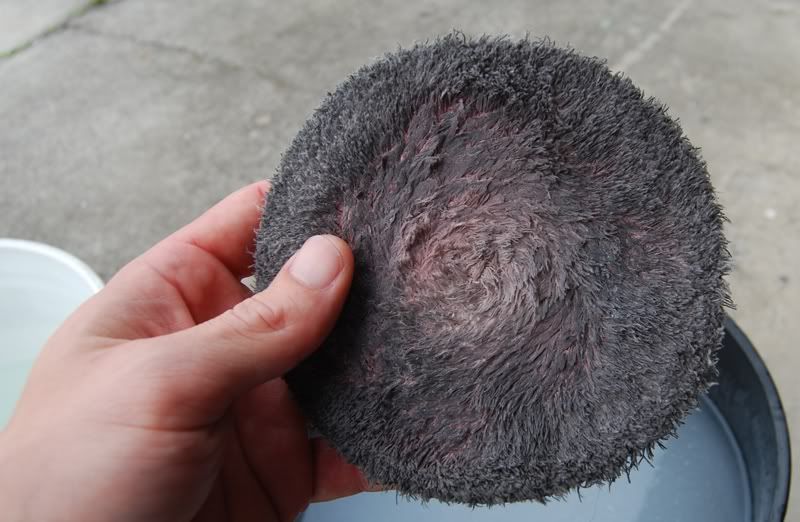
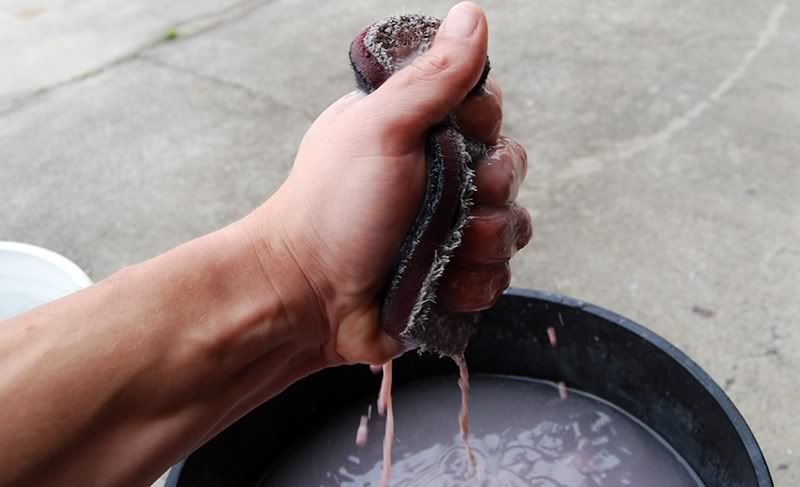
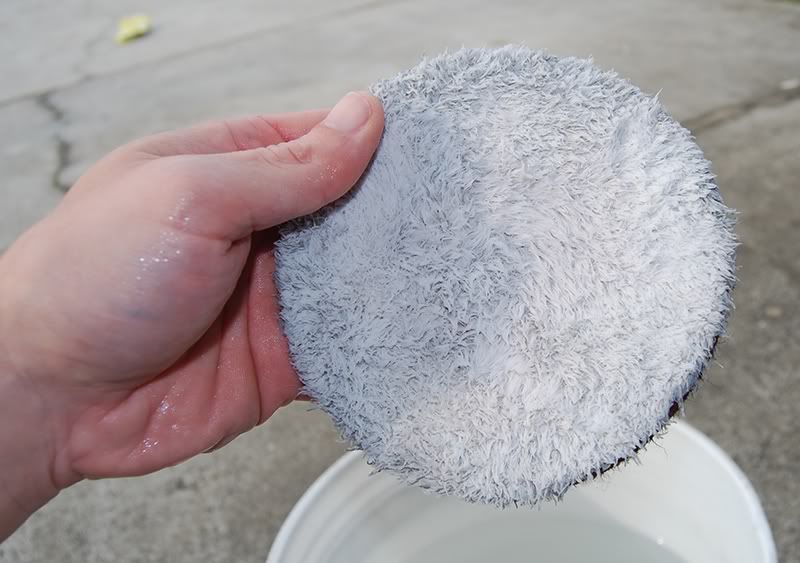
Notes
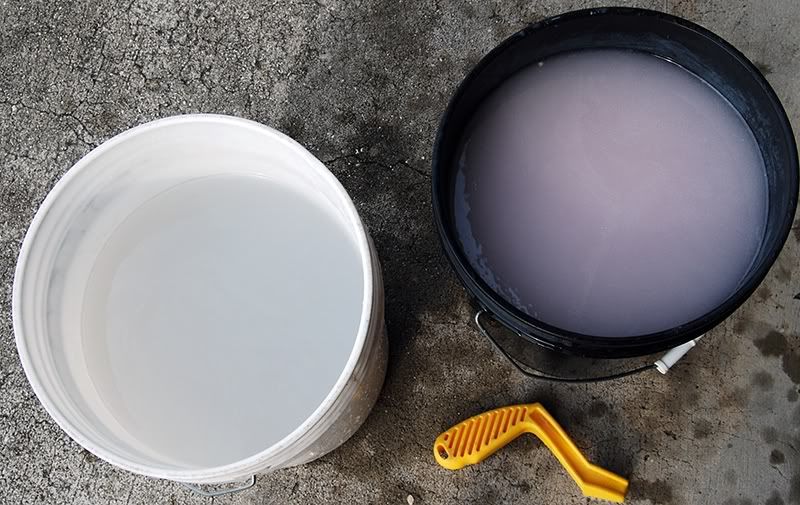
Keeping your polishing pads clean is extremely important to the performance and life of your polishing pads. I have used all of the machines, gadgets, and tools to clean pads, and while some of them really do a great job, they are not always practicable. I have always used dedicated pad cleaners, but a friend suggested to me that they where just degreasers. I looked around the garage, saw a spray bottle of Meguiar's Super Degreaser, and gave it a go. The results were instananeous. Over time this became my preferred method of pad cleaning and I enthusiasticly recommended this process to everybody who would listen.
Degreaser vs. Soap
A lot of detailers use liquid soaps, most commonly dish washing soaps, to clean their pads. Most of the stronger soaps do a great job, but can be frustrating to fully rinse out of the pad. It seems several hours of rinsing later you can still squeeze foam soap bubbles out. Meguiar's Super Degreaser rinses clean very quickly, as it is designed to release from surface quickly. Most dish soaps will leave behind a film to promote water sheeting off over plates and silverware, to resist water spotting. This film can be very difficult to fully remove, particularly once trapped inside the foam cells of a pad.
Two Bucket Method
While it is not necessary to have two buckets for pad washing, it certaintely helps. The wash bucket it were all the dirty cleaning happens, and this water will be contaminated with solution and polish residue. The rinse bucket is used after the pad has been cleaned to flush out any remaining solution from the first bucket and to ensure the pad is perfectly clean.
Getting Started
- Two Buckets- The larger the better. Fill each bucket up with water.
- Meguiars Super Degreaser- Diluted 10 parts water with 1 part solution.
- A pad brush- Used to scrub stubborn stains from the surface of pad.
- Dirty pads

The surface of this Meguiar's Softbuff 2.0 Cutting pad has a lot of embedded abrasives and is in desperate need of cleaning.


Spray the surface of the pad liberally with degreaser solution and massage the cleaner into the pad.

Dunk into the wash bucket. Massage and scrunch the pad in the water. Polish residue will release immediately.


Finally wring and inspect. There is some stubborn residue on the bottom right corner of this pad.

If needed, spray more degreaser on the pad and brush any stubborn areas with a stiff nylon brush, such as a pad brush.

Dunk and flush out as much solution in the wash bucket. Finally wring out as much solution over the wash bucket.

At this point the pad should appear clean, and well rang out. Finally massage and wring out any solution in the second bucket; the rinse bucket. This will ensure that all of the contaminated water from the wash bucket is removed and the pad is completely clean.

Finally spin the pad dry on a machine, if available, and allow to air dry completely before use.

The end result is a pad that is completely clean and should be free of any residues which could hamper further use. This method will clean the entire pad, instead of just the surface.

A Method for All Pads
This method, because of the submergence of the pad, is suited to all pad types including wool and multi-fingered pads that have large surface areas. These pads tend to require scrubbing for the best results.



Notes
- If you have sensitive skin or notice any irritation you should consider wearing nitrile, vinyl or latex gloves.
- Reticulated or 'closed-cell' foam pads will require additional time to dry. You can identify these pads because they will release little air bubbles that will make the water appear cloudy when massaged underwater.
- You should change the water in the buckets when they become contaminated. Try to keep the rinse bucket's water as clean as possible.
- The large surface area of wool, micro-finger, and microfiber pads will contaminate the water much quicker than foam pads. Clean the water more frequently






 A rotory is great for the spin dry cycle.
A rotory is great for the spin dry cycle.

Comment